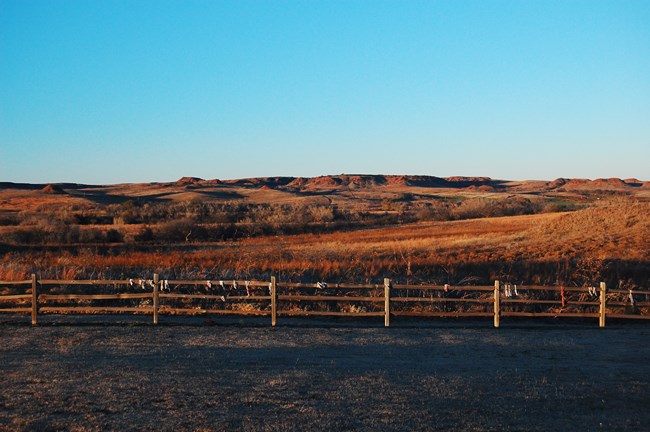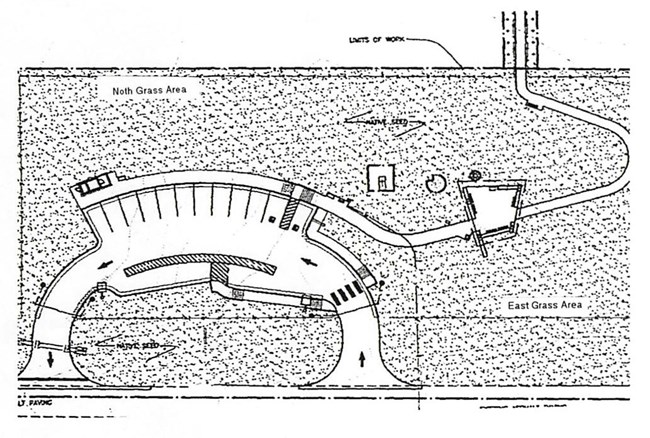
NPS Photo Signed July 29, 2025 by Superintendent Robert Maupin, and will remain in effect until amended or rescinded.
1. INTRODUCTIONThe Superintendent’s Compendium is the summary of park specific rules implemented under 36 Code of Federal Regulations (36 CFR). It serves as public notice, identifies areas closed for public use, provides a list of activities requiring either a special use permit or reservation, and elaborates on public use and resource protection regulations pertaining specifically to the administration of the park. The Superintendent’s Compendium does not repeat regulations found in 36 CFR and other United States Codes and CFR Titles, which are enforced without further elaboration at the park level.
The regulations contained in 36 CFR, Parts 1-7, are the basic mechanism used by the National Park Service (NPS) to preserve and protect the natural and cultural resources of the park and to protect visitors and property with the park.
In addition, Title 54 U.S.C. §100751(a) allows the NPS, through the Secretary of the Interior, to “prescribe such regulations as the Secretary considers necessary or proper for the use and management of System units.”
2. SUPERINTENDENT’S COMPENDIUMIn accordance with regulations and the delegated authority provided in Title 36, Code of Federal Regulations (“36 CFR”), Chapter 1, Parts 1-7, authorized by Title 54 U.S.C. §100751, the following provisions apply to all lands and waters administered by the National Park Service, within the boundaries of Washita Battlefield National Historic Site. Unless otherwise stated, these regulatory provisions apply in addition to the requirements contained in 36 CFR, Chapter 1, Parts 1-7.
Written determinations, which explain the reasoning behind the Superintendent’s use of discretionary authority, as required by Section 1.5(c), appear in this document identified by italicized print.
36 CFR § 1.5 Closures and Public Use Limits
The following are prohibited:
The term "unmanned aircraft" means a device that is used or intended to be used for flight in the air without the possibility of direct human intervention from within or on the device, and the associated operational elements and components that are required for the pilot or system operator in command to operate or control the device (such as cameras, sensors, communication links). This term includes all types of devices that meet this definition (e.g., model airplanes, quadcopters, drones) that are used for any purpose, including for recreation or commerce.
36 CFR § 1.6 Permits(a) When authorized by regulations set forth in this chapter, the Superintendent may issue a permit to authorize an otherwise prohibited or restricted activity or impose a public use limit. The activity authorized by a permit shall be consistent with applicable legislation, federal regulations and administrative policies, and based upon a determination that public health and safety, environmental or scenic values, natural or cultural resource, scientific research, implementation of management responsibilities, proper allocation and use of facilities, or the avoidance of conflict among visitor use activities will not be adversely impacted. Special Use Permits issued by the office of the Superintendent are required for, but not limited to:
The following types of filming activities may occur in areas open to the public without a permit and without advance notice to the NPS:
The organizer of any other type of filming activity must provide written notice to the Superintendent at least 10 days prior to the start of the proposed activity. Based upon the information provided, the Superintendent may require the organizer to apply for and obtain a permit if necessary to:
If the Superintendent determines that the terms and conditions of a permit could not mitigate the concerns identified above in an acceptable manner, the Superintendent may deny a filming request without issuing a permit. The Superintendent will provide the basis for denial in writing upon request. The NPS will consider requests and process permit applications in a timely manner. Processing times will vary depending on the complexity of the proposed activity. If the organizer provides the required 10 day advance notice to the NPS and has not received a written response from the NPS that a permit is required prior to the first day of production, the proposed filming activities may occur without a permit. The following are prohibited:
Violating a term or condition of a permit issued under to this action may also result in the suspension and revocation of the permit by the Superintendent.Special Use Permit Applications require at least 10 business days for a Record of Decision. Applications that may need the park to consult with the Cheyenne and Arapaho Tribes will require, at minimum, 30 business days. 36 CFR § 2.1 Preservation of natural, cultural, and archaeological resources(c)(1) The Superintendent may designate certain fruits, berries, nuts, or unoccupied seashells which may be gathered by hand for personal use or consumption upon a written determination that the gathering or consumption will not adversely affect park wildlife, the reproductive potential of a plant species, or otherwise adversely affect park resources.
36 CFR 2.2 Wildlife Protection(e) The Superintendent may designate all or portions of a park area as closed to the viewing of wildlife with an artificial light. Use of an artificial light for purposes of viewing wildlife in closed areas is prohibited.
36 CFR § 2.11 PicnickingPicnicking is not allowed, except in designated areas closed in accordance with § 1.5. The Superintendent may establish conditions for picnicking, otherwise picnicking in violation of established conditions is prohibited.
36 CFR § 2.15 Pets§ 1.4 Definitions: Pet means a dog, cat or any animal that has been domesticated. All park buildings are closed to pets, except:
36 CFR § 2.16 Horses and Pack AnimalsThe following are prohibited: (b) The use of horses or pack animals outside of trails, routes or areas designated for their use.
36 CFR § 2.21 SmokingSmoking (including vaping and e-cigarettes) is prohibited at the Overlook and Trails and within the interiors of all park buildings and within 25’ of formal entrance areas as defined as entrance steps or entry foyers of all park buildings. This designation is based on Executive Order 13058, published in the August 13, 1997 Federal Register. It is also designed to protect park resources and reduce the risk of fire. Smoking may be prohibited within all park boundaries during high fire danger. 36 CFR § 2.35 Alcoholic Beverages and Controlled SubstancesThe possession or consumption of a bottle, can, or other receptacle containing an alcoholic beverage which has been opened, a seal broken, or the contents of which have been partially removed, within the boundaries of the park is prohibited except under the conditions of a special use permit issued by the office of the Superintendent. This restriction is intended to reduce any possible conflict between users and to remain true to the purpose of the park. 36 CFR §2.50 Special EventsSports events (which include walking and running events), pageants, regattas, public spectator attractions, entertainments, ceremonies, and similar events are allowed: Provided, however, there is a meaningful association between the park area and the events, and the observance contributes to visitor understanding of the significance of the park area, and a permit therefore has been issued by the Superintendent. A permit shall be denied if such activities would: (1) Cause injury or damage to park resources; or (2) Unreasonably impair the atmosphere of peace and tranquility maintained in wilderness, natural, historic or commemorative zones; or (3) Unreasonably interfere with interpretive, visitor service, or other program activities, or with the administrative activities of the National Park Service; or (4) Substantially impair the operation of public use facilities or services of National Park Service concessionaires or contractors; or (5) Present a clear and present danger to the public health and safety. (6) Result in significant conflict with other existing uses. The park is closed to certain recreational activities, whether organized or unorganized, whose occurrence would result in the creation of a hazardous condition and/or derogation of the values or purposes for which the park was established or, which interfere with the use of park resources by other visitors are prohibited. 36 CFR § 2.51 Public Assemblies and MeetingsPublic assemblies and meetings are allowed by permit only in designated areas. These areas are designated on the attached map (Exhibit 1). 36 CFR § 2.52 Sale or Distribution of Printed MatterSale or distribution of printed materials is allowed by permit only in the two areas designated within the fenced Overlook area. These areas are designated on the attached map (Exhibit 1). 36 CFR §2.62 – MemorializationThe scattering of human ashes from cremation is prohibited, except pursuant to the terms and conditions of a permit. Items used for religious observances may be hung from the following areas:
36 CFR §4.30 BicyclesThe use of bicycles or electric bicycles (e-bikes) are prohibited on park property except in parking areas. 
EXHIBIT 1Designation of Areas Available for First Amendment Activities
The exercise of first amendment activities by any individual, group, or organization within the area administered by the National Park Service shall be in compliance with the provisions of 36 CFR §§ 2.51 and/or 2.52. Such activities shall also be subject to and in compliance with other laws and regulations applicable to the area administered by the National Park Service. In accord with and consistent with 36 CFR §§ 2.51 and 2.52, the Superintendent will issue permits for the exercise of first amendment activities in the following designated areas:
The parking areas are public access areas and their entrances, visitors, and/or park employees must not be obstructed in any way and public access and egress from the park must not be compromised.
Due to the solemn nature and purpose of the park, sound amplification is prohibited without a permit. |
Last updated: July 30, 2025
